Long before there was a National Park Service, Americans were travelling to the parks on horseback and in stagecoaches. But at the turn of the century, the railroads began building spur lines to the parks and lodges for park guests. And they started advertising their park routes to Post readers. The ads ran well into the 1950s, when families preferred to reach the parks in the family car.
The old rail lines dropped passenger service long ago, but their routes to the parks are now served by Amtrak, which provides transportation to 237 of the National Park Service’s properties.
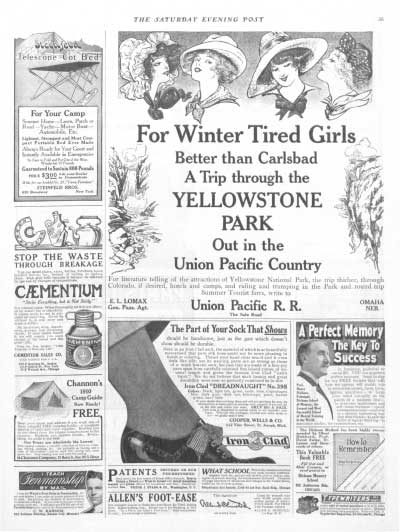
June 25, 1910
When it was established in 1872, Yellowstone Park was accessible only by horseback or carriage. Consequently, the park had only 1,000 visitors a year. By 1902, the Union Pacific Railroad had started passenger service to the park, carrying travelers from the Idaho Falls station to the park entrance in a stagecoach. Shortly before this ad appeared, however, it had opened passenger service on a line from St. Anthony, Idaho, to the park’s west entrance.
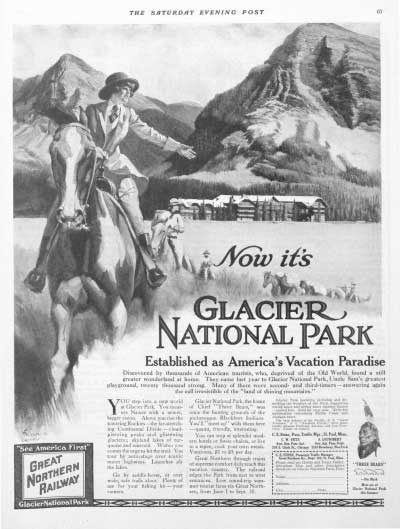
April 29, 1916
The Great Northern Railway Company, created in 1889, grew across the Great Plains from St. Paul into North Dakota, Montana, Idaho, and Washington. When the railway recognized the appeal of Glacier National Park, it built stations at the park’s west and east entrances, its rail line crossing the continental divide. It also built Glacier Park Lodge, which is shown in the background of this ad.
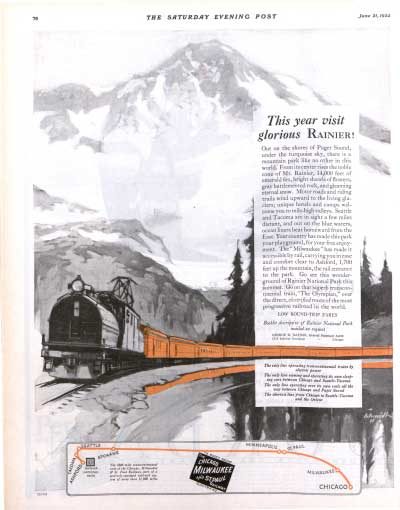
June 21, 1924
The Milwaukee Road was proud of its electric locomotive service when it was introduced in 1919. They staged public demonstration to show that its Class EP-2 electric engine could out-pull steam locomotives. This electric engine pulled the Olympian, the company’s passenger train that ran from Chicago to Seattle, stopping at Rainier National Park.
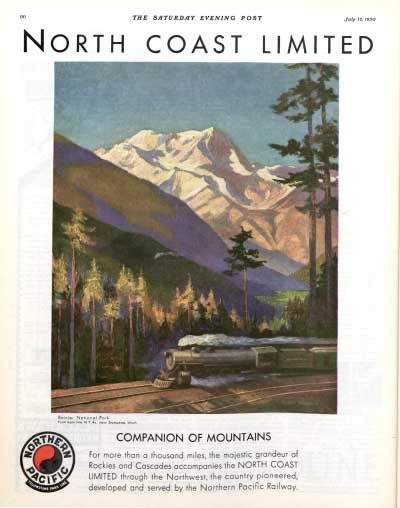
July 12, 1930
The North Coast Limited operated between Chicago and Seattle from 1900 to 1971. When this ad appeared, the Limited was making its 2,331-mile run in 63 hours — incredibly fast for that time. The Northern Pacific had also just upgraded the passenger cars, adding barber and valet service, separate bath and showers for men and women, and even radios on board!
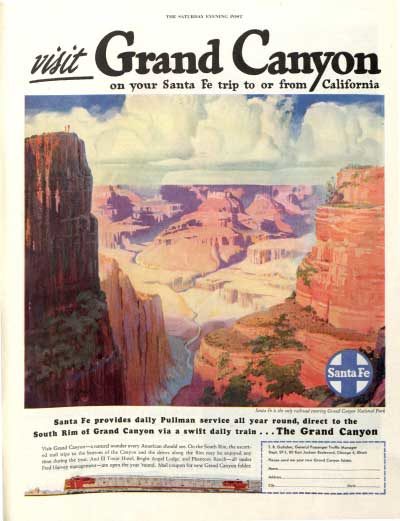
October 25, 1947
The Santa Fe first built a spur line from Williams, Arizona, to the Grand Canyon in 1901. In 1905, it completed construction of the famous El Tovar Hotel, operated by the Fred Harvey Company. It was located right on the South Rim of the Canyon, just 300 feet from the railroad station.
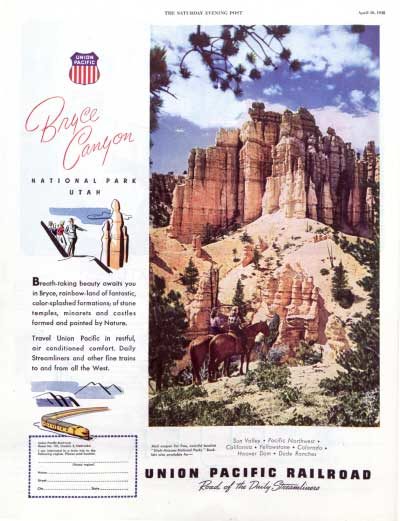
April 10, 1948
The Utah Parks Company, run by the Union Pacific Railway, managed several inns and lodges in Cedar City, Utah. From there, rail passengers would be driven by bus to Zion National Park, Bryce Canyon, the North Rim of the Grand Canyon, and other sites.
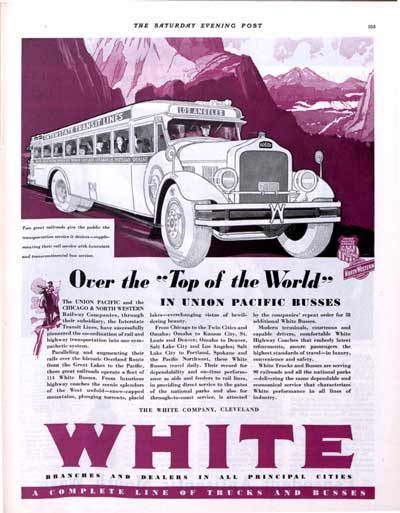
June 20, 1931
Starting business as a sewing-machine manufacturer, the White Company began making vehicles in 1900 and continued until 1980. The company developed its buses specifically to provide passenger service through the national parks. They were unique for their canvas tops, which could be rolled back for sightseeing in good weather. Today, 43 White buses are still providing transportation at Glacier and Yellowstone, as well as Gettysburg National Battlefield.
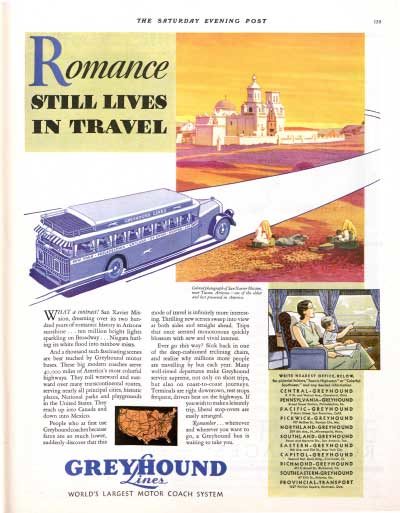
March 29, 1931
Greyhound Lines began in 1914, when an out-of-work car salesman offered rides to miners who wanted to hit the saloons in Alice, Minnesota. Within four years, his company had grown into a profitable 18-bus company. By the year of this ad, the company had combined 100 different bus lines and was offering service over 40,000 miles. Travelers often chose to take the bus because it was cheaper than the train.
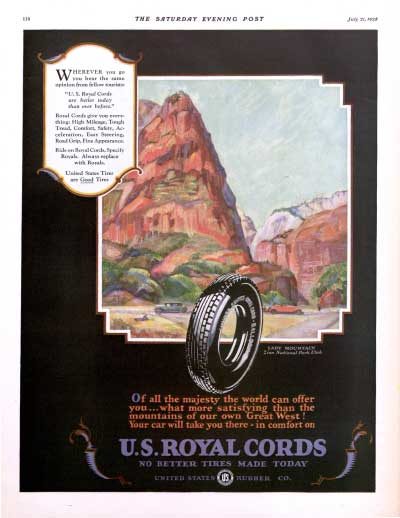
July 21, 1928
It would have been an intrepid motorist who drove the family to the parks back in the 1910s. The western roads were often unpaved and filled with debris. Blowouts were a frequent, time-consuming annoyance to passengers. By the late 1920s, though, tires had become smaller and wider. The new profile made riding more comfortable. And reinforcements by cord fiber in the rubber made them more durable.
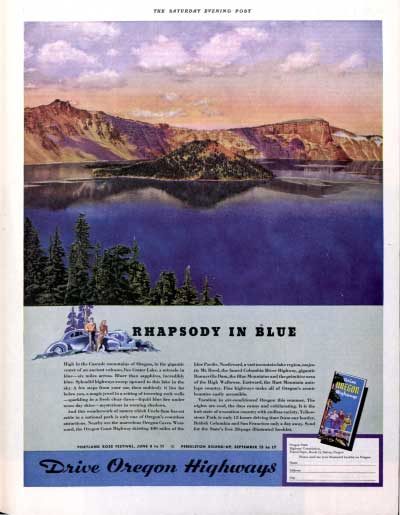
April 23, 1938
By 1938, federal programs like the CCC and WPA had expanded and improved the country’s highway system. For Americans fortunate enough to afford the car and gas (10 cents a gallon), the national parks were never more accessible.
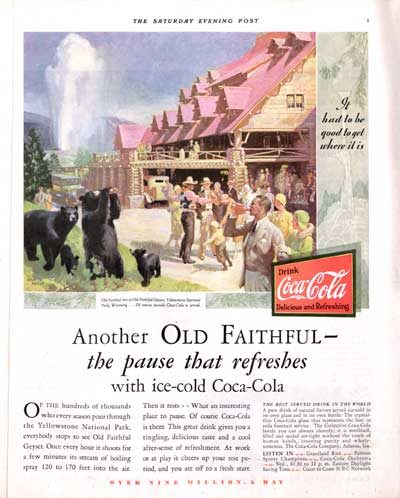
June 13, 1931
The Old Faithful Inn, shown in this Coke ad, was built in 1905 and was operated by the Northern Pacific Railroad. Today, the park takes measures to keep bears and tourists far apart. Visitors are strictly warned against feeding bears — or giving them soft drinks.
Become a Saturday Evening Post member and enjoy unlimited access. Subscribe now
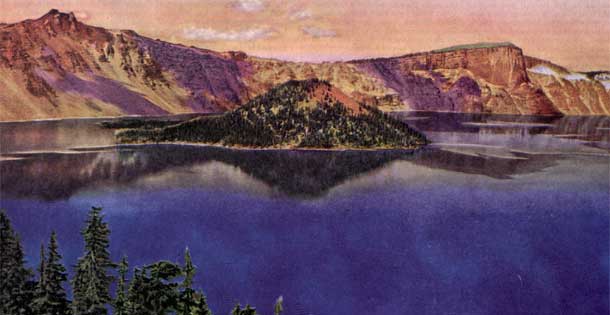
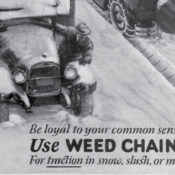
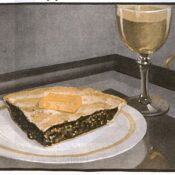
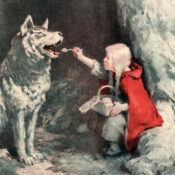
Comments
These are all wonderfully diverse ad selections, all featuring beautiful artwork of course.
One favorite is the ‘North Coast Limited’ (July ’30) featuring that steam train, steaming on through the Northwestern countryside!
The Santa Fe Grand Canyon ad from ’47 really shows it as a work of God with that white light seemingly pouring down from heaven.
The ’48 Bryce Canyon “castle” is spectacular. It looks like a real building!
1931’s Coca-Cola ad is charming and innocent with the bears and humans in this wonderfully unrealistic show of harmony. Even Old Faithful is gushing with approval and pride in the background there!
I have to wonder Jeff, if it’s possible the black bear having that Coke foreshadowed or could have inspired the animated white polar bears doing the same in the 90’s “Always Coca-Cola” TV ads? I’m sure the company would say “no”, but it does give one cause to pause.